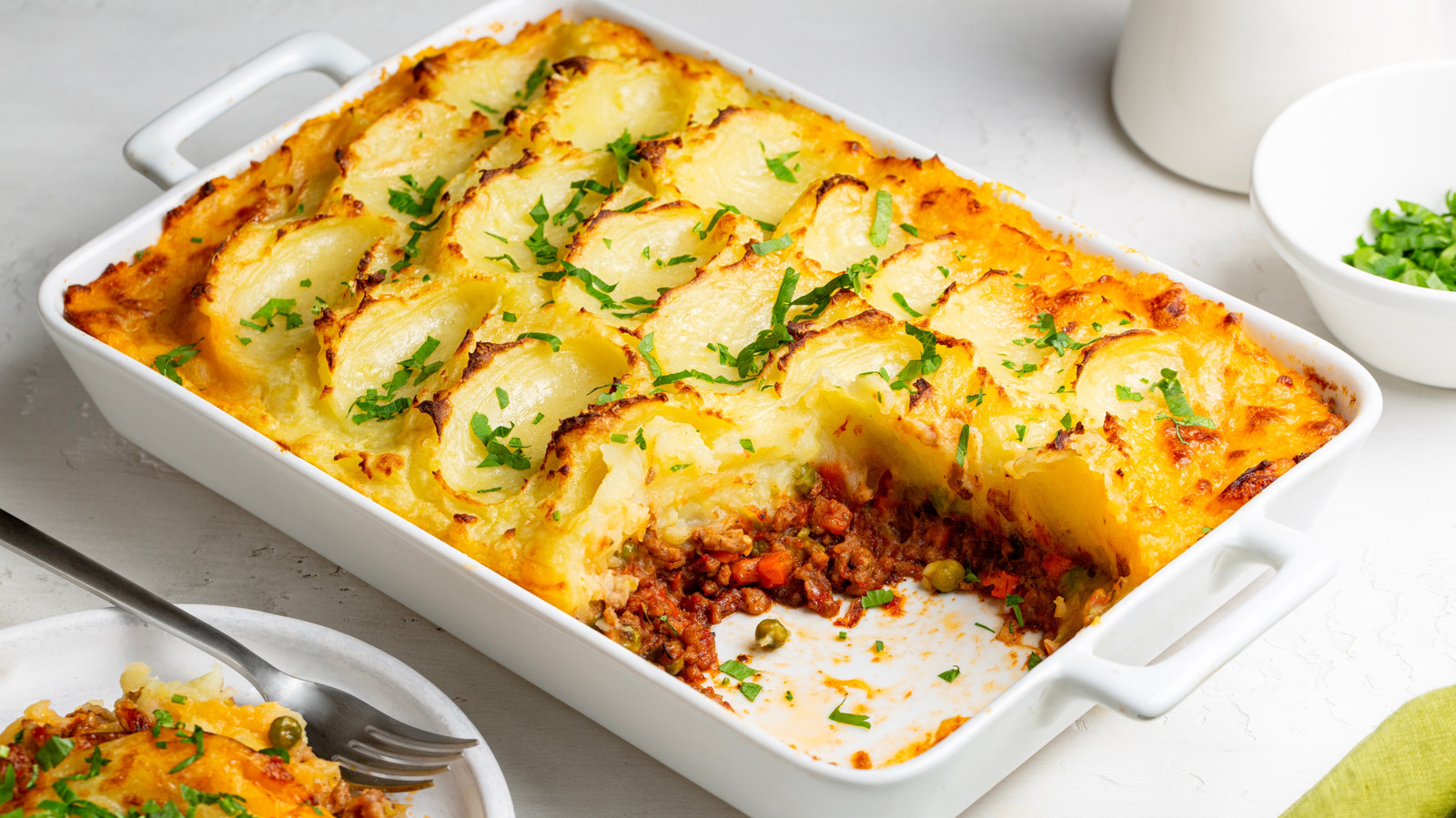
"Warming your dairy ingredients - consisting of cream, milk, butter, or a combination of all three - is essential for achieving a light, pillowy texture. Hot potatoes will absorb hot liquid more readily than cold liquid. If you try to mash in cold milk and cold sticks of butter, the melting and absorption will take extra time. This means more mashing, which is like overworking bread dough - your finished product will likely have a heavy, glue-like consistency."
"In an exclusive chat with Chowhound, James Sawyer, executive chef at Ri Ra Irish Pub in Las Vegas, advised home chefs to "heat the milk and butter together until the butter has melted and the milk is hot but not boiling" before working the mixture into the potatoes. This will save you the extra elbow grease of mashing in cold dairy, elevating the final texture of the mashed potato topping and your shepherd's pie."
"Warming your dairy is only one of many tips you need for the best mashed potatoes. In fact, celebrity chef Ina Garten recommends mashing potatoes in a food mill (like this Hungry Artisan model on Amazon) before adding warmed dairy and mixing it in quickly. Garten also recommends adding buttermilk for a nice kick of acidity. If you don't have a food mill, a potato ricer is another great option for achieving a uniformly smooth texture."
Warming dairy ingredients (cream, milk, butter, or a combination) before adding them to mashed potatoes produces a light, pillowy topping that is sturdy and fluffy. Hot potatoes absorb hot liquid more readily than cold liquid. Adding cold milk and cold sticks of butter delays melting and absorption, forcing extra mashing that overworks the potatoes and creates a heavy, glue-like consistency. Heat milk and butter together until the butter melts and the milk is hot but not boiling, then incorporate quickly. Use a food mill or potato ricer for a uniformly smooth texture, and consider buttermilk for added acidity.
Read at Tasting Table
Unable to calculate read time
Collection
[
|
...
]